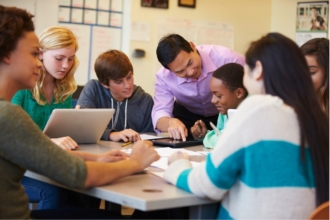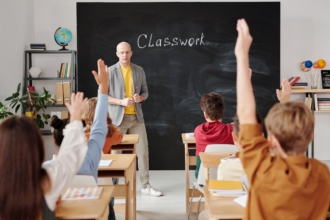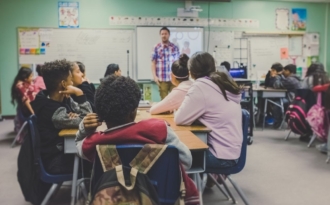Using technology in the classroom — whether advanced analytical tools at a university or kid-friendly games at a local elementary school — is becoming standard practice. But how did we get here, and how has the learning process changed?
Below we explore a few of the contributing factors behind why technology has become so ingrained in the modern learning experience and the impact it has had on education.
Pro Tip
For an insightful look into the future of higher education, explore “8 Top Trends in Higher Education to Watch in 2024” on Jotform’s blog.
Technology in the classroom: A primer
Reasons for technology in the classroom
- To prepare students for the world of work. While educating the populace is important for an intelligent society, generally school is meant to be a pathway to the working world. Since the business landscape is full of technology, it only makes sense to prepare future workers early on by equipping students with technology in the classroom. Keri Randolph of Tulane University School of Professional Advancement adds that students should “learn to use technology in a way that makes them skilled yet responsible consumers of information, and lets them create and communicate effectively.”
- The ubiquity of mobile devices. Unlike in decades past, nearly every student now has a mobile device. If they’re not engaged with something taking place in front of them, they’re likely focused on their screen. Whether schools like it or not, technology is in the classroom. Embracing it is the only option for effectively reaching students.
- The rise of self-learning. Given the wealth of information students have access to, it’s easy for them to learn on their own. However, without proper instruction from a trained educator, students may not have the right (or enough) context to fully or accurately absorb concepts.
Pro Tip
Jotform is an easy-to-use form builder for collecting feedback, evaluating courses, gathering student information, and more.
Technology’s impact on modern education
Today, students have access to an unprecedented amount of information through the internet. “Our focus, as educators, is on teaching students how to access, evaluate, use, apply, and even innovate with that information,” says Randolph.
Technology provides the tools and methods to deliver personalized, engaging educational experiences for all students. This is important because classrooms are full of diverse learners with equally diverse needs. The market for educational technology (EdTech) has grown in recent years and given way to numerous tools that span a number of educational areas. These tools are impacting the way
- Educators deliver the curriculum
- Students receive feedback
- Educators assess student learning
- Students absorb concepts
From augmented and virtual reality to teaching coding to kids, numerous EdTech innovations have sprung up in recent years and created new and engaging ways of learning across all grade levels.
“We are also breaking down barriers of space and time,” notes Randolph. And she’s not wrong. The modern classroom isn’t necessarily tied to a physical location, nor is it limited to specific time frames. Online classes are now common; students can even earn a degree from online universities. Learning is no longer tied to classrooms — it can take place from a coffee shop, a home office, or almost anywhere else.
Anthony Gaenzle of SE Healthcare calls attention to how technology has helped make college more accessible: “I teach courses at West Virginia University as an adjunct professor; they are 100 percent online.”
Gaenzle’s students are able to log in, access and upload their assignments, submit inquiries to him, interact with one another through forums and video, and access a number of tools that aid in improving their education.
“Students now have the ability to earn a degree at a school that’s 1,000 miles away without ever leaving their home,” Gaenzle says. “Technology has truly changed the face of higher education.”
According to Randolph, “We are reimagining ‘school’ as a community of learners connected through common learning goals, not a group of students sitting at desks.













Send Comment: